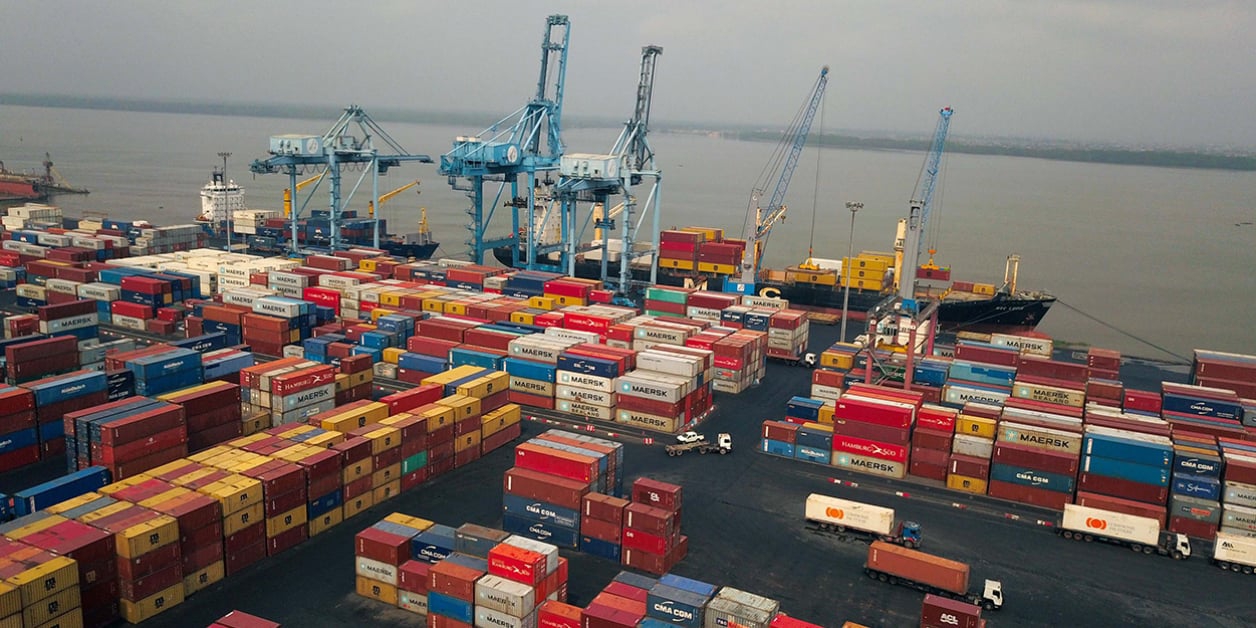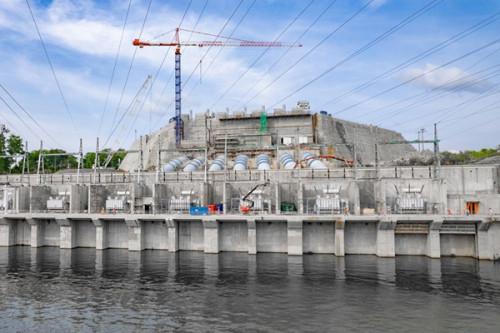War in Ukraine : Where things stand in the global energy crisis one year on
In that commentary, Dr Fatih Birol, Executive Director of the International Energy Agency, makes the point of the war in Ukraine. «It’s almost one year since Russia invaded Ukraine, an act that delivered a massive shock to global energy markets and a crippling blow to Russia’s relationship with its biggest customer, the European Union. On…

In that commentary, Dr Fatih Birol, Executive Director of the International Energy Agency, makes the point of the war in Ukraine.

«It’s almost one year since Russia invaded Ukraine, an act that delivered a massive shock to global energy markets and a crippling blow to Russia’s relationship with its biggest customer, the European Union.
On the eve of its invasion of Ukraine, Russia was by far the world’s largest exporter of oil and natural gas to global markets. And the European Union was buying around 50% of Russia’s oil exports and over 60% of its gas exports. The International Energy Agency had been warning persistently for months before the invasion that Russia was distorting natural gas markets by reducing its deliveries to Europe, driving up prices at exactly the same time as tensions were rising over Ukraine.
Now, as we approach the one-year mark of Russia’s war, which has caused an enormous humanitarian tragedy in Ukraine, it is a moment to assess the impacts in the energy world and look ahead to what may happen next.
When the invasion began and sent energy markets into turmoil, the IEA responded rapidly and effectively. Within a week, we had begun coordinating the first of two emergency releases of oil from IEA member countries’ reserves – the two largest such releases in the nearly 50-year history of our Agency – to prevent shortfalls in global supplies.
On 1 March, just a week after the invasion, we also published a 10-Point Plan showing how the European Union could rapidly reduce its reliance on Russian natural gas supplies. A combination of measures that would support energy security and affordability while keeping Europe on track for its climate goals.
Since then, we have continued to provide support and advice to governments, businesses and citizens as the global energy crisis triggered by Russia’s invasion has unfolded over the past year. This includes working with the European Commission and governments across Europe on concrete measures to move away from dependence on Russian supplies. And it includes the second major release of emergency oil stocks by our member countries and a second 10-Point Plan, this one providing recommendations to reduce oil consumption in advanced economies during the peak driving period.
In September 2022, we highlighted and debunked three prominent myths about the global energy crisis. First, the claim that Russia is winning the energy battle. Not true. Second, the fallacy that the crisis is a clean energy crisis. Not true. And third, the narrative that the crisis will derail efforts to tackle climate change. Not true. As we made clear in our World Energy Outlook in October, the crisis is set to accelerate the clean energy transition as governments respond with stronger policies.
It is important here to stress that the energy crisis is global. Although some of the biggest disruptions have been felt in Europe and made a lot of the headlines – major impacts are being felt in many emerging and developing economies. For example, we see this clearly in the number of people worldwide who lack access to electricity, the large majority of whom live in Sub-Saharan Africa. This number rose last year for the first time in decades as energy prices spiked amid the crisis.
Responding to the global energy crisis

So, where do things stand today? In terms of gas, Russia’s pipeline flows to Europe have plummeted by 80% from their level before the invasion. Its oil exports to global markets have fallen only slightly so far – but much of this is being sold at steep discounts to international benchmark prices, with fewer and fewer buyers in advanced economies. Russia’s oil and gas export revenues are suffering after their initial uptick last year following the invasion. On a monthly basis, they dropped by $12 billion in January 2023 compared with a year earlier – a decline of about 40%.
At the same time, the cleaner alternatives to Russian fossil fuels are growing rapidly as governments seek to strengthen their energy security amid the crisis. The amount of renewable power capacity added worldwide rose by about a quarter in 2022; global electric car sales leaped by close to 60%; investments in energy efficiency jumped; installations of heat pumps surged, especially in Europe; and nuclear power is making a strong comeback.
In this context, it’s important to give credit to the response by governments to this large and complex energy crisis. Yes, there was a healthy dose of luck involved, notably the mild winter in Europe that pushed down gas demand and prices. But government actions and policies were vital. While it has suffered some social and economic bruises, Europe has made real progress in reducing its reliance on Russian fossil fuel supplies and improving the resilience of its energy system.
Governments turn to clean technologies for energy security
Despite this progress, Europe is certainly not out of the woods yet. Looking at the coming year, the situation appears fragile for both oil and gas – especially in Europe. There are still a lot of uncertainties at play that could have major impacts.
In gas markets, let’s not forget that Russia is still delivering some pipeline gas supplies to Europe. It could yet cut that down to zero, putting new strains on markets. At the same time, China, the world’s largest gas importer, is reopening from its Covid restrictions, which last year contributed to Chinese gas demand declining for the first time in 40 years. The question is how big the rebound in China’s demand will be. But there is no doubt that it will add serious competition in LNG markets for European buyers compared with last year. That in turn makes things even more challenging for importers with less purchasing power, especially in the developing world.
It’s also important to remember that Europe was fortunate with the mild weather this winter. It can’t afford to assume the same thing will happen next winter.
In oil markets, the China question also applies. How big will the rebound in demand be from the world’s largest oil importer? The well-supplied oil balance at the start of 2023 could quickly tighten as Western sanctions affect Russian production and exports, even with the safety valve provided by the G7 price cap. Product markets, especially diesel, are most at risk as demand growth recovers.
What we can see at this stage is that Russia’s market power in oil and gas is only going to decline further. Its share of the international gas trade is set to basically halve from 25% in 2021 to 13% in 2023. And its share of the EU’s gas demand is set to plunge from 40% to just 10%.
For oil, Russia’s exports to the EU have almost completely dried up as the embargos on both crude and refined oil products are now in effect. In a sign that Russia may struggle to place all these barrels with other customers, Moscow has already signalled a production cut next month.

What comes next?
Looking at the future, while there are still a lot of uncertainties, we can draw a few conclusions.
First, Russia played the energy card and it didn’t win. It now faces the likelihood of further declines in oil and gas output in 2023 and a permanent loss of standing in the energy world. It is not only losing major customers but also access to key technologies and financing due to sanctions. And much of the gas that used to go to Europe will struggle to find an alternative market.
Given that energy is the backbone of Russia’s economy, it’s not surprising that its difficulties in this area are leading to wider problems. Its budget deficit is skyrocketing as military spending and subsidies to its population largely exceed its export income.
The second key conclusion is that government policies really do matter – especially in times of crisis. We saw the success of policies incentivising faster deployment of clean energy. We saw important pragmatism from governments continuing to use technologies they had previously said they wouldn’t, such as nuclear power. And we saw resourcefulness in their efforts to rapidly identify and secure new and emergency fuel supplies to keep the lights on. From all of this, governments can take some confidence.
Thirdly, we’re not out of the energy crisis yet, but the mild weather this winter has bought us a vital commodity – time. That’s time for bold policies to work. Time to implement the structural changes that will insulate energy systems against future volatility. That is essential because as we have seen, this kind of energy market volatility causes real hardship for many consumers and businesses.
My hope and expectation is that governments will take even stronger policy action to further accelerate clean energy transitions – not only to reduce emissions but also because this crisis has made clear that faster transitions offer a way to enhance energy security and to benefit from a huge opportunity for jobs and industrial growth.
As we at the IEA have said since early on, the only lasting solution to both the current energy crisis and the climate crisis lies in a rapid transition to clean energy.
Published on www.iea.org





